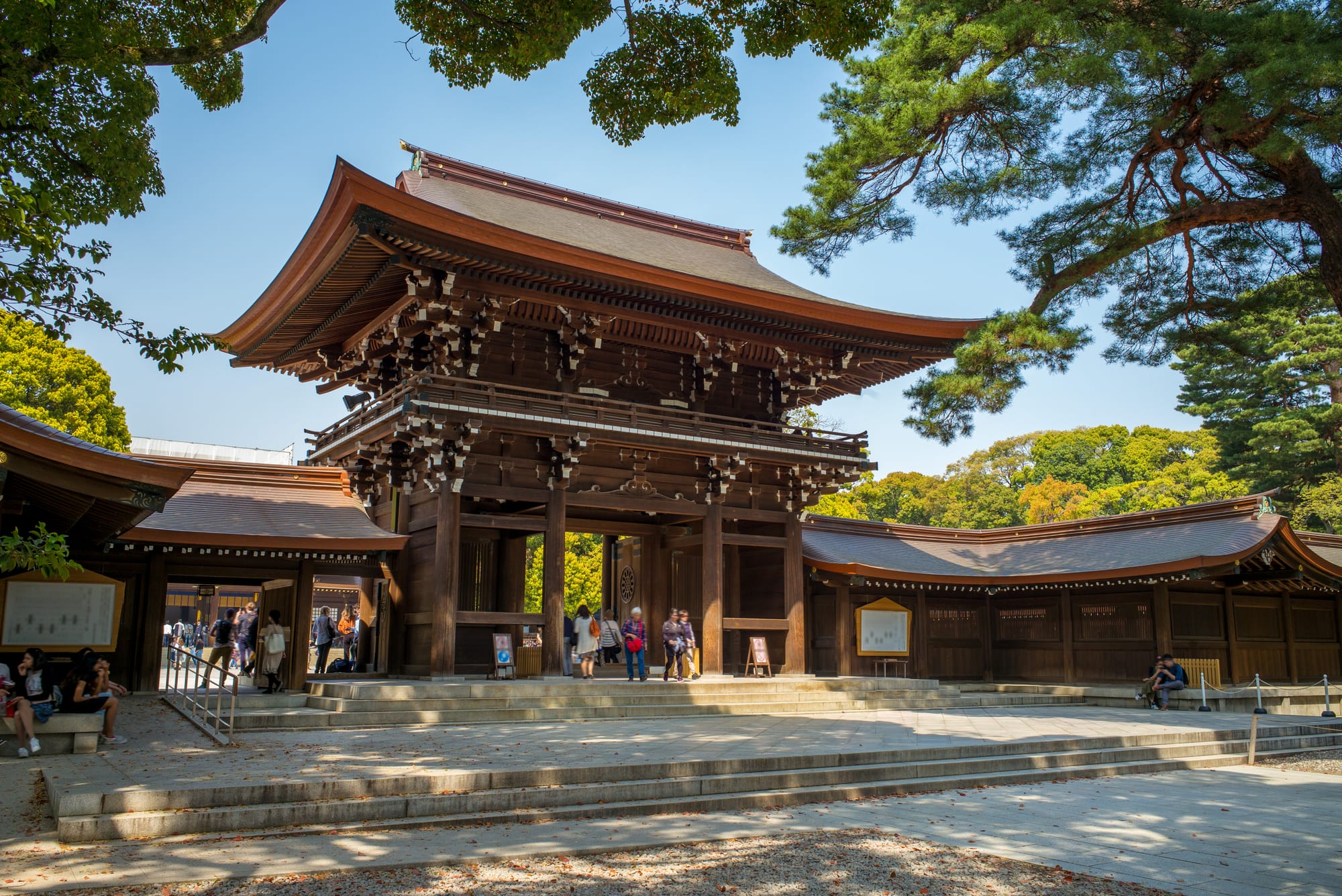The Shinto shrine was inaugurated in 1920 and is dedicated to the spirits of Emperor Meiji and his wife, Empress Shoken. It was destroyed during World War II but was rebuilt. Emperor Meiji was the first emperor of modern Japan. He was born in 1852 and ascended the throne in 1867, at the height of ►
The Shinto shrine was inaugurated in 1920 and is dedicated to the spirits of Emperor Meiji and his wife, Empress Shoken. It was destroyed during World War II but was rebuilt. Emperor Meiji was the first emperor of modern Japan. He was born in 1852 and ascended the throne in 1867, at the height of the Meiji Restoration, towards the end of the feudal era and after being restored from office as emperor. Thanks to him, Japan went into a period of rapid modernization until he died in 1912.
Tourists can participate in religious activities, such as making offerings, buying charms and amulets, or writing their prayers or wishes on an "ema"(a wooden plaque). The place is so popular that, during the New Year, it frequently welcomes more than three million visitors for the first prayers of the year, called "hatsumode", more than any other temple in the country. Apart from that, traditional Shinto weddings are often celebrated there. In addition, it hosts traditional festivities such as Hinamatsuri (Dolls Festival) in March, it is an event where people wish good health to young girls by exhibiting a set of dolls, in July there is the Tanabata-matsuri (Star Festival), an opportunity to wish good health to children to improve their craft skills, finally, the Ritual Ceremony for the Anniversary of the Inauguration of the Meiji Jingu and the Ceremony of the Great Autumn Ritual is organized to celebrate the spirit of Emperor Meiji. Not far from the building is the Meiji Jingu Museum, which opened in 2019. The museum displays the shrine's collection, such as the emperor and empress' personal belongings, as well as the car the emperor drove in during the official declaration of the Meiji Constitution in 1889.
◄
